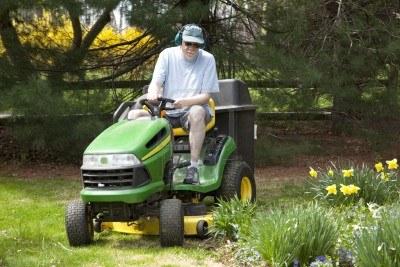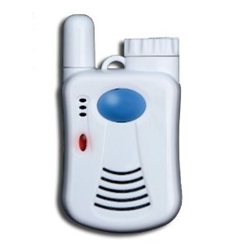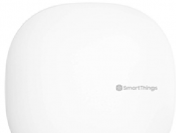Elderly seniors who live alone need a way to get emergency help quickly, but with so many different personal emergency response systems on the market today, you really need to do your homework and compare all of the features before buying or leasing. That’s what my friends Bob and Kate Gibson did when Bob’s father became a widower and insisted on staying in his own home and living independently.
Kate and Bob made a list of the key features they needed and began comparing personal emergency response systems until they found the one that fit the bill. If you are also shopping around for one of these systems, you might want to use their checklist to narrow down your choices:
1) Extended Range is Critical
Bob’s father — the “senior†Mr. Gibson – enjoys the outdoors and likes to take care of his own yard, which means mowing the lawn in the summer and shoveling the driveway in the winter. That made range the most important feature of a personal emergency response system for his lifestyle.
“The majority of personal emergency response systems only work within 50 feet of their base station,†Kate explained, “or what we like to call ‘within shouting range.’ These systems are virtually useless to my father-in-law. He would be out-of-range immediately whether he’s in his backyard or at the other end of his house!â€
They did find one system – the wireless Freedom Alert – that has a maximum range of 600 feet (clear line-of-sight) from base station to pendant transmitter. Using the Freedom Alert’s test button, it was easy for Bob to confirm that the 600-foot range was adequate for Mr. Gibson’s home and yard. (Because home sizes vary, it’s a good idea to always check distance.)
 2) Two-Way Communication with Family and Friends
2) Two-Way Communication with Family and Friends
Mr. Gibson, who has no serious health issues, lives within a couple of miles of his two children and has friendly neighbors up and down the block. His son Bob knew that if his father needed to reach out for help, he’d prefer to call someone in the family or one of his neighbors and not some stranger. So, requirement #2 was the ability to dial up family or friends if there was an emergency.
“Dad has his own people nearby, so he doesn’t need one of those emergency call systems that are answered by a central monitoring station,†Kate said. “His family or friends can be there in an instant to help him and all of us are capable of deciding if the police or an ambulance is needed.â€
Again, the Freedom Alert personal emergency response system met their criteria. It’s the world’s smallest cordless speakerphone and can be programmed with up to four phone numbers. The Freedom Alert pendant — which can be worn on a lanyard or around the wrist, clipped to a belt or attached to a wheelchair — lets users have two-way conversations with family, friends (or a 911 operator) instantly from anywhere in or around the home. A handy emergency wall communicator, sold as an accessory, can be mounted near the bed or shower to ensure two-way emergency communication in critical locations like these.
3) A 911 Backup Plan
 Knowing that there’s always the possibility that Mr. Gibson could have a medical emergency where he’s unable to speak or none of his family or friends were home when he called them, having a backup plan was #3 on Bob and Kate’s list of requirements. Ideally, they wanted a personal emergency response system that would automatically call a 911 operator in these circumstances.
Knowing that there’s always the possibility that Mr. Gibson could have a medical emergency where he’s unable to speak or none of his family or friends were home when he called them, having a backup plan was #3 on Bob and Kate’s list of requirements. Ideally, they wanted a personal emergency response system that would automatically call a 911 operator in these circumstances.
It turns out, the Freedom Alert is one of only two systems authorized to call Emergency 911 automatically and it’s the only system that can also dial up to four programmed phone numbers. If a live person doesn’t answer one of the four phones, Freedom Alert calls 911. It also offers the option of dialing 911 only.
A 911 operator will be able to identify the user’s address whether Freedom Alert is dialing via a standard phone line or a cable company phone line (VoIP), which is especially important in emergency situations where the user is unable to speak. Note, however, that users of VoIP phone service should check with their VoIP provider to confirm that they are 911-integrated and that their home address is registered so that emergency services personnel will be able to locate them when 911 is dialed.
For homes without a landline phone or VoIP, the Freedom Alert can also be used with a GSM or CDMA cellular terminal.  A cellular terminal is basically a box with an antenna that gives you instant cellular connectivity so you can hook up any device — like a FreedomAlert — that works through a phone line and requires a dial tone.
4) No Monthly Fees
Like so many seniors, Bob’s father lives on a fixed income and that made avoiding an expensive long-term contract with an emergency response service #4 on Bob and Kate’s checklist.
“For a one-time purchase price, we were able to buy Dad a Freedom Alert system that he owns and can use forever,†Bob said. “There are no monthly charges or monitoring fees with the Freedom Alert and he still gets 24/7 coverage. He’s had it for six months now and we’re really pleased. Freedom Alert was the only personal emergency response system that met all of our criteria and costs less than $300.â€






Pingback: In Emergencies, a Key Safe Lockbox Gives First Responders Speedy Entry | owndailyarticles.org